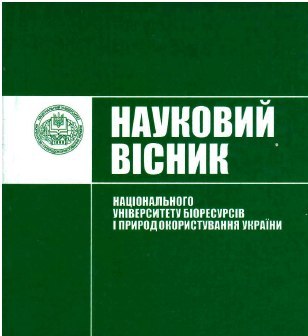Аxiological aspect of culturally marked lexis
DOI:
https://doi.org/10.31548/philolog0(276).2017.024%20-%2034Abstract
Introduction. Language is a powerful indicator of underlying cultural values. Much of the lexis of a language has a cultural referent and is thus specific to a speech community. The meaning of culturally marked words is often difficult to grasp without some cultural knowledge and poses translation problems, particularly when the words are associated with cultural domains. In the present paper we focus on the cultural domain of transport. The article is devoted to the research of ethnic peculiarities of conceptualization of reality in the domain of transport, objectified with the help of culturally marked words, which form the corresponding parts of the Ukrainian, German, Russian, English language world models.
Purpose. The aim of the article is to analyze ethnolinguistic peculiarities of lexis denoting vehicles in English, German, Russian and Ukrainian.
Methods. The present paper is done in the frames of contrastive trend in the study of language-culture interaction and deals with the problems of linguistic gnosiology, linguistic psychology and linguistic ethnology. A set of various methods and techniques is used (descriptive, comparative, typological methods, component, contextual analysis, conceptual analysis, psycholinguistic semantic scaling).
Results. The research of culturally determined language phenomena which belong to different structural levels of four languages (Ukrainian, Russian, English and German) has shown that cultural language facts (ethnic markers of language consciousness) have ability to model specific features of national world outlook and national way of thinking with the help national stereopypes and linguaculturems. The main attention in this research was given to the phenomenon of ethnic mentality (the way ethnic collective perceive, feel, imagine, interpret and estimate the reality) which is rather hard to study because of its very abstract character. The article provides a complex research of ethnocultural specific character of nationally-marked language elements. Philosophical concept of the research is created on basis of ethnocentric comprehension of language elements. The theoretical aspects of dichotomous opposition “universal/national” are considered and ideological specificities of its ethnocultural presentation are established. The article traces the genesis of ethnoesthetic views and criteria that have arisen owing to the interaction of geographical and climatic, historical and sociological, and ethnopsychological factors.
Conclusion. The peculiarities of correlation between language and mind, language and thinking, language and culture are defined. Contemporary studies of the problem of language picture of the world, the essence of ethnic stereotypes, their influence and role in the culture of ethnic groups are analyzed in the article. It is shown that the content of stereotypes is largely shaped by extralinguistic factors which are reflected in the languages. The analyses of means of transport nominations via application of semantic opposition SELF / OTHER showed the allomorphism of national peculiarities of conceptualization of reality.
References
Vorobev, V. V. (1997) Lingvokulturologiya (teoriya i metody) [Linguoculturology (theory and methods)]. Moscow : Izd-vo Ros.un-ta druzhbyi narodov, 331.
Gurova, O. O. (2005) Lyudi i veschi v sovetskoy i postsovetskoy culture [People and things in Soviet and post-soviet epoch]. Novosibirsk : Izd-vo NGU, 345.
Popova, Z. D. (2002) Yazyik i natsionalnaya kartina mira [Language and national model of the world]. Voronezh : Istoki, 59.
Sergeev, A. V. (2007) Russkie: stereotipyi povedeniya, traditsii, mentalnost [Russians: behavior stereotypes, traditions, mentality]. Moscow: Flinta : Nauka, 320.
Slyishkin, G. G. (2000) Ot teksta k simvolu: lingvokulturnyie kontseptyi pretsedentnyih tekstov v soznanii i diskurse [From text to symbol: linguocultural conceptions of precedent texts in conscious and discourse]. Moscow: Academia, 128.
Snitko, O. S. Stereotipi u movniy svidomosti osobistosti (2007) [Stereotypes in language conscious of a personality]. Movni ta kontseptualni kartini svitu. Kyiv. Ch.3. P. 41–45.
Hanipov, R. R. (2007) «Gopniki» – znachenie ponyatiya, i elementy reprezentatsii subkulturyi «gopnikov» v Rossii [Gopniki – the meaning of the concept and elements of gopniks’ subculture representation in Russia]. Social Identities in Transforming Societies. Novosibirsk. P. 14–19.
Shynkaruk, V. D. (2002) Katehoriyi modusu i dyktumu u strukturi rechennya [Modus and dictum categories in structure of a sentence]. Monohrafiya. – Chernivtsi: Ruta, 272.
Bartmiński, J. (1985) Stereotyp jako przedmiot lingwistyki [Stereotype as a subject of linguistics]. Z problemów frezeologii polskiej i słowiańskiej. Wrocław. Warszawa. Kraków. Gdańsk. Łódź. P. 25–53.
Klooth, A. (2005) Auto – Stereotypen? Deutsche, britische und französische Fahrzeugwerbung im Vergleich [Cars – Stereopypes? German, British and French under comparison]. Duisburg, 432.
Downloads
Published
Issue
Section
License
Relationship between right holders and users shall be governed by the terms of the license Creative Commons Attribution – non-commercial – Distribution On Same Conditions 4.0 international (CC BY-NC-SA 4.0):https://creativecommons.org/licenses/by-nc-sa/4.0/deed.uk
Authors who publish with this journal agree to the following terms:
- Authors retain copyright and grant the journal right of first publication with the work simultaneously licensed under a Creative Commons Attribution License that allows others to share the work with an acknowledgement of the work's authorship and initial publication in this journal.
- Authors are able to enter into separate, additional contractual arrangements for the non-exclusive distribution of the journal's published version of the work (e.g., post it to an institutional repository or publish it in a book), with an acknowledgement of its initial publication in this journal.
- Authors are permitted and encouraged to post their work online (e.g., in institutional repositories or on their website) prior to and during the submission process, as it can lead to productive exchanges, as well as earlier and greater citation of published work (See The Effect of Open Access).

